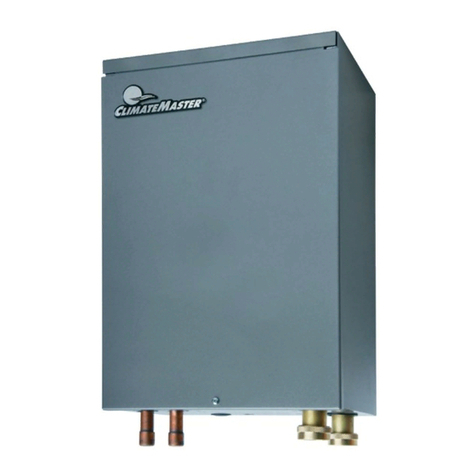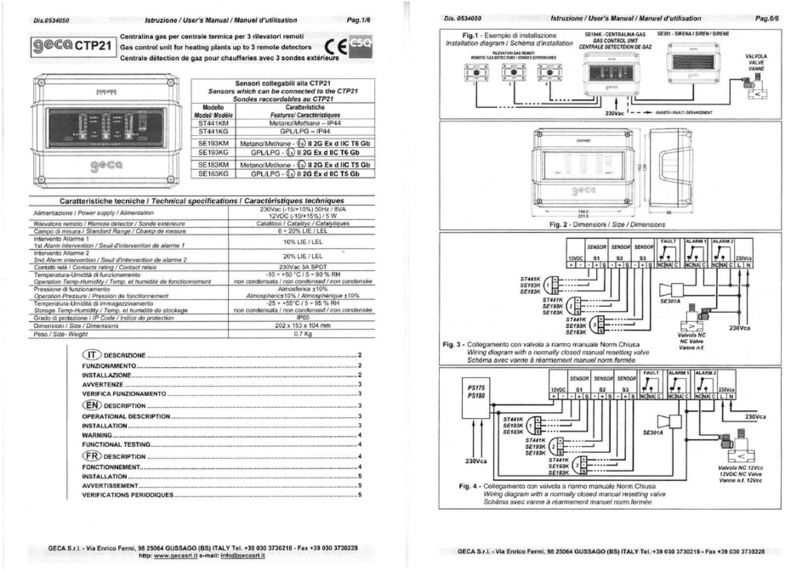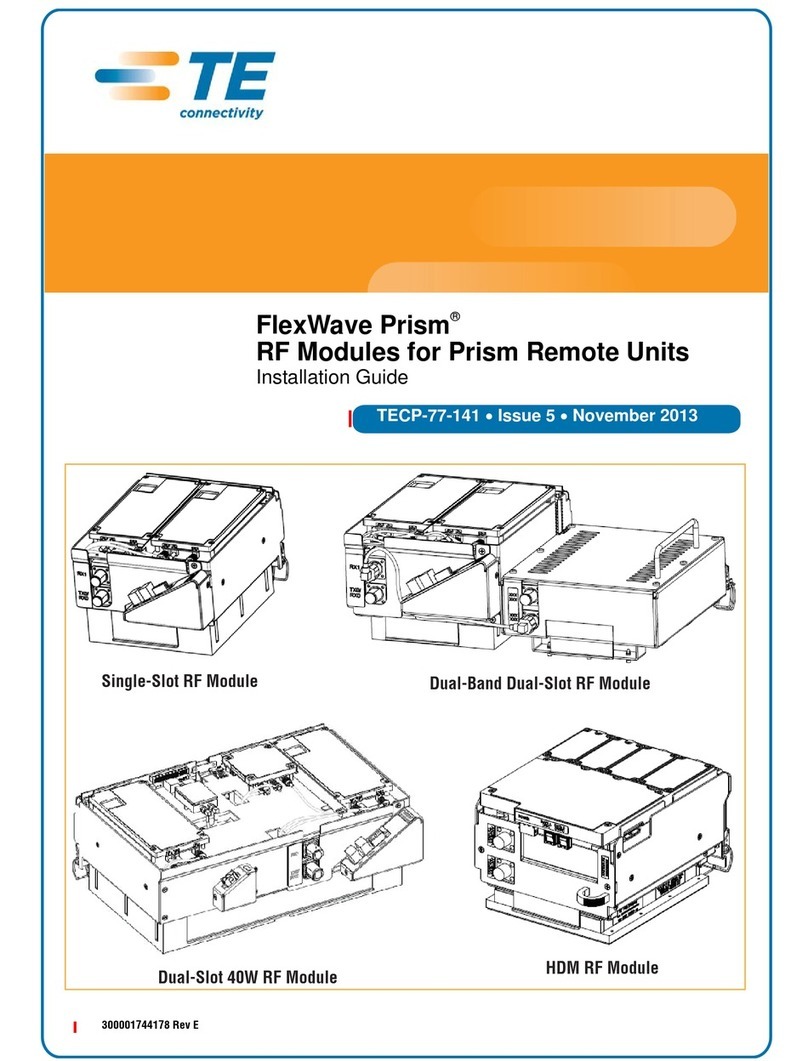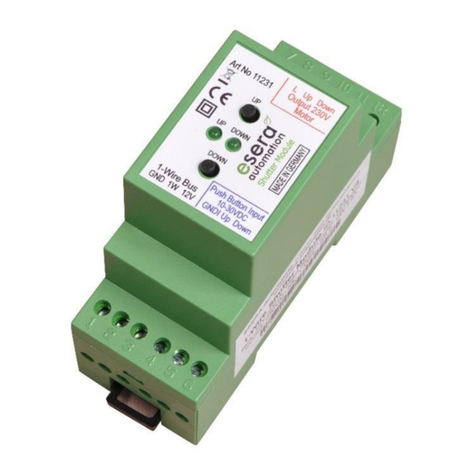ClimateMaster Flow Controller 3 Guide

Residential Geothermal Loop,
Single and Two-Pump Modules
Installation, Operation &
Maintenance Instructions
97B0015N01
Revision: 2/9/16
Flow Controller 3
Table of Contents
Model Nomenclature 3
General Information 3
Flow Controller Mounting 4
Piping Installation 5
Electrical Wiring 9
Flushing the Earth Loop 10
Antifreeze Selection 13
Antifreeze Charging 15
Low Temperature Cutout Selection 16
Flow Controller Pump Curves 17
Pump Replacement 18
Geothermal Closed Loop Design 19
Loop Fusion Methods 19
Parallel Loop Design 19-22
Closed Loop Installation 23-24
Pressure Drop Tables 25-30
Building Entry 31
Site Survey Form 31
Warranty 32
Revision History 34

Flow Controller 3
Rev.:Feburary 9,2016
2Geothermal Heat Pump Systems
This page has intentionally been left blank.

3
Flow Controller 3
Rev.: Feburary 9, 2016
A F C G 2 C 1
1 2 3
4
567
Accessory Flow Controller
1 = 1 Pump
# of Pumps B = Brass 3-way valve with double O-ring fittings
Valves
Pump Model #
1 = UP26-99
2 = UP26-116 (AFC2B2 only)
3 = UPS32-160
4 = UPS60-150
Vendor/Series
G = Current Series
2 = 2 Pumps
C = Composite 3-way valve with double O-ring fittings
Rev.: 12/07/10
Model Nomenclature
GENERAL INFORMATION
Figure 1a: Flow Controller Dimensions (1 Piece Cabinet)
7.6” [192mm]
(includes pump)
10.2” [259mm]
13.5” [335mm]
5.0” [127mm]
4.7” [119mm]4.7” [119mm] 4.7” [119mm]4.7” [119mm]
Figure 1b: Flow Controller Dimensions (2 Piece Cabinet)
6.9” [174mm]
(includes pump)
10.2” [259mm]
14.9” [378mm]
5.0” [127mm]
4.5” [114mm]4.5” [114mm] 4.5” [114mm]4.5” [114mm]
FLOW CONTROLLER DESCRIPTION
The AFC series Flow Controller is a compact, easy to mount
polystyrene cabinet that contains 3-way valves and pump(s)
with connections for ushing, lling and pumping residential
geothermal closed loop systems. The proven design is foam-
insulated to prevent condensation. Full ow service valves
minimize pressure drop. One or two Grundfos pump models
UP26-99 or UP26-116 are available for a variety of unit ow
rates and loop layouts. Flow Controllers are designed for
systems that require water ow rate of up to 20 U.S. GPM
[1.26 l/s]. Unit and loop connections are designed for double
o-ring adaptor ttings for a variety of connection types
(fusion, threaded, barbed, cam). Pumps are 230VAC, 60Hz.
An attractive gray polystyrene cabinet with black pump(s)
provides an esthetically pleasing enclosure for pump(s) and
valves.
Safety
Warnings, cautions and notices appear throughout this
manual. Read these items carefully before attempting any
installation, service or troubleshooting of the equipment.
DANGER: Indicates an immediate hazardous situation, which
if not avoided will result in death or serious injury.
DANGER labels on unit access panels must be observed.
WARNING: Indicates a potentially hazardous situation, which
if not avoided could result in death or serious injury.
CAUTION: Indicates a potentially hazardous situation or an
unsafe practice, which if not avoided could result in minor or
moderate injury or product or property damage.
NOTICE: Notication of installation, operation or
maintenance information, which is important, but which is
not hazard-related.

Flow Controller 3
Rev.:Feburary 9,2016
4Geothermal Heat Pump Systems
Flow Controller Mounting
CAUTION! Figure 2: Mounting Flow Controller on Stud Wall
Figure 3: Mounting Flow Controller on the Side of Unit
NOTICE! - Flow Controller pumps must be mounted so that
the pump shaft is always in a horizontal position. In other
words, Flow Controller must always be mounted in a vertical
position (not on it’s back or mounted to the ceiling). Pump
damage will occur with pump shaft in a vertical orientation.
General
The Flow Controller should be located as close to the unit
as possible to limit the length of rubber hose kit and thus
its associated pressure drop. In general the Flow Controller
can be mounted in any orientation with the exception of
when the pump shafts are in a vertical position as when it is
laid at on the oor or any similar position. The controller is
typically mounted in one of three locations (see below). Be
certain that there is adequate access to all required ush
ports and valves before mounting.
Stud Wall - Mounting on stud wall with or without drywall
can be accomplished by using the two supplied lag bolts
through the top and bottom center holes directly into the
studs as shown in Figure 2.
Side of Unit - Mounting on the side of the unit can be
accomplished by using the four self-drilling screws directly
into the sheet metal access panels or cabinet as shown in
Figure 3. Be careful not to puncture any internal refrigerant
piping or other components with the screws. It should be
remembered that heat pump access will be limited in this
mounting position.
Concrete wall - Mounting onto a concrete wall can be
accomplished by using 4-1/4” [10.8 cm] ‘Tapcon’ screws
(supplied by others) directly into the concrete wall.
CAUTION! The following instructions represent industry
accepted installation practices for closed loop earth
coupled heat pump systems. Instructions are provided
to assist the contractor in installing trouble free ground
loops. These instructions are recommendations only.
State/provincial and local codes MUST be followed and
installation MUST conform to ALL applicable codes. It is
the responsibility of the installing contractor to determine
and comply with ALL applicable codes and regulations.

5
Flow Controller 3
Rev.: Feburary 9, 2016
Piping Installation
Figure 4: Double O-Ring Adapters
To Fittings Part #
Polyethylene (PE) Fusion 1-1/4” PE Fusion x Double O-ring AFC6F
PE Fusion 1” PE Fusion x Double O-ring AFC5F
PE Barb 1-1/4” insert barb x Double O-ring1AFC6I
PE/Rubber Hose Barb 1” insert barb x Double O-ring1AFC4I
Cam Adapter Male Cam adapter x Double O-ring2AFC4C
Copper Sweat or PVC Glue 1” MPT x Double O-ring3AFC4T
NOTES:
1. Use two all-stainless hose clamps per connection. One set of 1” insert barb x
Double O-ring adapter ttings is included with AHK5EC hose kit.
2. One set of cam adapters required for connection to ush cart hoses. Cam
connectors should be left with the installed Flow Controller for future service.
Most ush carts will have female cam ttings that will mate to these ttings.
3. Adapters from 1” MPT to copper sweat or PVC glue provided by others.
Table 1: Flow Controller Connection Materials
Piping Material Insulation Description
1” Hose Kit 1-3/8” [34.9 mm] ID - 1/2” [12.7 mm] wall
1” IPS PE 1-1/4” [31.8 mm] ID - 1/2” [12.7 mm] wall
1-1/4” IPS PE 1-5/8” [41.3 mm] ID - 1/2” [12.7 mm] wall
2” IPS PE 2-3/8” [60.3 mm] ID - 1/2” [12.7 mm] wall
Table 2: Typical Piping Insulation Materials
AFC4C
AFC4I
AFC4T
Hose Kit
AHK5EC
AFC5F
AFC6F
Piping Installation
The Flow Controller features Double O-ring ttings for
exible and easy installation. Table 1 illustrates the
connection options available for Flow Controllers with
polystyrene cabinets. Avoid using 3/4” [19.1mm] piping
on ows greater than 6 gpm [0.38 l/s]. Pressure drop in
piping systems should be calculated to insure adequate
ow through unit. All piping should be properly insulated
with closed cell insulation of 1/2” [12.7 mm] wall thickness.
Table 2 shows the insulation requirements for typical piping
materials. Piping insulation should be glued and sealed
to prevent condensation using closed cell insulation glue.
The swivel connectors on the Flow Controller are designed
to be hand tightened only. Connections between the Flow
Controller and adapters are sealed with double o-rings
ttings shown in gure 4.
Loop side piping is typically polyethylene piping directly
into the Flow Controller. Connection to the Flow Controller

Flow Controller 3
Rev.:Feburary 9,2016
6Geothermal Heat Pump Systems
Piping Installation
Figure 5: AHK5EC Hose Kit Typical Detail
Figure 6: Two Units Utilizing One Flow
Controller (One Side Shown)
can be accomplished by a fusion or barbed tting as shown
in Table 1. In multiple Flow Controller systems such as
multifamily housing, PE can also be used on the heat pump
side. Polyethylene is the only acceptable material for pipe
buried in the ground.
Unit side piping is typically connected using the hose
kit (AHK5EC), which contains all ttings necessary for
connection between the Flow Controller and the unit as
shown in Figure 5.
In multiple unit systems, PE piping materials can be used
to ‘tee’ more than one unit into the Flow Controller. It is
recommended that a hose kit still be used at the end of the
PE piping run to facilitate ease of installation and service of
the units as shown in Figure 6. Insulate all exposed piping.
Plastic to metal threads should not be used due to their
leakage potential.
The APSM pump slaving module can be used to allow a
single Flow Controller to be controlled by two heat pumps as
shown in gure 7a.

7
Flow Controller 3
Rev.: Feburary 9, 2016
Two Units with One Flow Controller
NOTES:
1. Piping is shown schematically
. Actual pipe diameter and layout must be determined before installation.
2. Pressure drop calculation must be made to verify that Flow Controller can deliver design flow rate when both units are oper
ating.
3. Hose kits of longer than 10 ft. (3 meters) one way should not be used. PE pipe or SCH80 PVC should be used for lengths gre
ater than 10 ft. (3 meters).
4.
All units must include P/T ports for flow rate measure and balancing.
5. Use optional field-installed loop pump slaving relay (part #
APSM) to wire both units to the Flow Controller pump(s).
Heat Pump Heat Pump
Flow
Controller
Field-supplied
full-port ball valve
for balancing
Each heat pump
must include P/T
ports to verify flow rates
LWT
EWT
LWT
EWT
Heat Pump Heat Pump
Flow
Controller
Water Out
Water In
Water Out
Water In
Figure 7a: Parallel Unit Piping 1
Piping Installation

Flow Controller 3
Rev.:Feburary 9,2016
8Geothermal Heat Pump Systems
NOTES:
1. Piping is shown schematically. Actual pipe diameter and layout must be determined before installation.
2. Pressure drop calculation must be made to verify that parallel pumping arrangement provides enough head to deliver design flow rate to each unit
when all units are operating.
3. Flow Controller should be mounted close enough to unit to maintain short (approx. 10 ft., 3m) hose kit from Flow Controller to unit.
4. All units must include P/T ports for flow rate measure and balancing.
Multiple Units on Common Loop Field
Parallel Pumping Arrangement
Heat Pump Heat Pump Heat Pump
Field-supplied
full-port ball valve
for balancing
Field-supplied
check valve to
prevent short-cycling
Each heat pump
must include P/T
ports to verify flow rates
Water Out
Water In
Water Out
Water In
LWT
EWT
Flow
Controller
Flow
Controller
Flow
Controller
Heat Pump
Water Out
Water In
Figure 8b: Parallel Unit Piping 2
Piping Installation

9
Flow Controller 3
Rev.: Feburary 9, 2016
Flow Controller Electrical Wiring
Model Qty Volts Amps HP
UP26-99 1 230 1.07 1/6
UP26-99 2 230 2.14 1/3
UP26-116 2 230 3.50 1/3
Figure 8a: Heat Pump / Circulator Pump
Power Wiring
Figure 8b: Wiring for Two Units Sharing One Flow
Controller (APSM Module)
WARNING!
CAUTION!
Power wiring to the Flow Controller should conform to all
applicable codes. Figure 8a illustrates the wiring required
between the heat pump and Flow Controller. Note the Flow
Controller is available only in 230V single phase voltage.
Pumps are fused through a pair of circuit breakers in the
unit control box. See electrical table for Flow Controller
characteristics.
The pump slaving module is designed to allow two units
to share one Flow Controller. The module is mounted in a
NEMA enclosure, which is designed to be mounted on the
Flow Controller or on the outside of the unit. Wire the pumps
and unit as shown in gure 8b.
Electrical Table
WARNING! To avoid possible injury or death due to
electrical shock, open the power supply disconnect switch
and secure it in an open position during installation.
CAUTION! Use only copper conductors for eld installed
electrical wiring. Unit terminals are not designed to accept
other types of conductors.

Flow Controller 3
Rev.:Feburary 9,2016
10 Geothermal Heat Pump Systems
Flushing the Earth Loop
Figure 10a: Valve Position A - Loop Fill
Unit
Garden
Hose
Flow
Controller
Loop
Valve
Position
Flush Cart
Figure 9a: Typical Cleanable Flush
Cart Strainer (100 mesh [0.149mm])
Figure 9b: Cam Fittings for Flush Cart Hoses
Attach
to Flow
Controller
Flush Port
Connect
to Flush
Cart Hose
(1 of 2)
NOTICE: A hydrostatic pressure test is recommended on ALL
piping, especially underground piping before nal backll per
IGSHPA and the pipe manufacturers recommendations.
Front of F.C.
Valve Position
WARNING!
Once piping is completed between the unit, Flow Controller
and the ground loop, nal purging and charging of the loop
is needed.
A ush cart (at least a 1.5 hp [1.1kW] pump) is needed to
achieve adequate ow velocity in the loop to purge air and
dirt particles from the loop itself. Antifreeze solution is used
in most areas to prevent freezing. All air and debris must be
removed from the earth loop piping system before operation,
Flush the loop with a high volume of water at a high velocity
(2 fps [0.6 m/s] in all piping), both directions using a lter
in the loop return line, of the ush cart to eliminate debris
from the loop system. See charts 6a through 6e for ow rate
required to attain 2fps [0.6 m/s]. The steps below must be
followed for proper ushing.
Fill loop with water from a garden hose through ush cart
before using ush cart pump to ensure an even ll and
increase ushing speed. When water consistently returns
back to the ush reservoir, switch to valve position B.
WARNING! Disconnect electrical power source to prevent
injury or death from electrical shock.

11
Flow Controller 3
Rev.: Feburary 9, 2016
Figure 10b: Valve Position B - Unit Fill
Unit
Garden
Hose
Flow
Controller
Loop
Valve
Position
Flush Cart
Flushing the Earth Loop
Front of F.C.
Valve Position
Figure 10c: Valve Position C - Loop Flush
Unit
Garden
Hose
Flow
Controller
Loop
Valve
Position
Dead Head
Pump Test for
Air
Flush Cart
Front of F.C.
Valve Position
This position should be switched while lling to ll the
unit heat exchanger and hose kit. The position should be
maintained until water consistently is returned into the ush
reservoir.
Switch to valve position C. The supply water may be shut o
and the ush cart turned on to begin ushing. Once the ush
reservoir is full, do not allow the water level in the ush cart
tank to drop below the pump inlet line or air can be pumped
back out to the earth loop. Try to maintain a uid level in the
tank above the return tee so that air can not be continuously
mixed back into the uid. Surges of 50 psi [345 kPa] can
be used to help purge air pockets by simply shutting o the
return valve going into the ush cart reservoir. This process
‘dead heads’ the pump to 50 psi [345 kPa]. To dead head
the pump until maximum pumping pressure is reached,
open the valve back up and a pressure surge will be sent
through the loop to help purge air pockets from the piping
system. Notice the drop in uid level in the ush cart tank.
If all air is purged from the system, the level will drop only
1 - 2 inches [2.5 - 5 cm] in a 10” [25.4 cm] diameter PVC
ush tank (about a half gallon [1.9 liters]) since liquids are
incompressible. If the level drops more than this level,
ushing should continue since air is still being compressed
in the loop uid. Do this a number of times. When the uid
level is dropping less than 1-2” [2.5 - 5 cm] in a 10” [25.4 cm]
diameter tank, the ow can be reversed.
NOTICE: Actual ushing time require will vary for each
installation due to piping length, conguration, and ush cart
pump capacity. Most closed loop installations will require at
least 20 minutes or longer.

Flow Controller 3
Rev.:Feburary 9,2016
12 Geothermal Heat Pump Systems
Figure 10d: Valve Position D - Full Flush
Unit
Garden
Hose
Flow
Controller
Loop
Dead Head
Pump Test for
Air
Flush Cart
Add
Antifreeze
Now if
Needed
Figure 10e: Valve Position E - Pressurize and Operation
Unit
Garden
Hose
3
Close Flow
Controller
Valves for
Operation
Mode
Loop
1
Dead Head
Pump to
Pressurize
to 50 psi
Flush Cart
2
Close to
Isolate Flow
Controller
Valve
Positions
Flushing the Earth Loop
Front of F.C.
Valve Position
Front of F.C.
Valve Position
Move valves to position D. By switching both valves to this
position, water will ow through the loop and the unit heat
exchanger. Finally, the dead head test should be checked
again for an indication of air in the loop. Fluid level drop
is your only indication of air in the loop. Antifreeze may
be added during this part of the ushing procedure; see
antifreeze section for details.
As shown in Figure 10E, close the ush cart return valve
to pressurize the loop to at least 50 psi [345 kPa], not to
exceed 75 psi [517 kPa]. After pressurizing, close the ush
cart supply valve to isolate the ush cart. Move the Flow
Controller valves to position E. Loop static pressure will
uctuate with the seasons and pressures will be higher in
the winter months than during the cooling season. This
uctuation is normal and should be considered when
charging the system initially. Unhook the ush cart from the
Flow Controller. Install Flow Controller caps to ensure that
any condensation/leakage remains contained within the Flow
Controller package. If water pressure is too low to pressurize
the loop to between 50 and 75 psi [345 to 517 kPa], use a
hydraulic pump to pressure the loop through the P/T port,
being careful to bleed any air before introducing any uid
through the P/T port (Some weed sprayers works well as
hydraulic pumps).
NOTICE: It is always a good idea to plan for a service call/
check-up the rst summer of operation, as the loop pressure
may be low due to the stretching of the pipe/rubber hose
after the pipe has settled into the ground and the warmer
summer loop temperatures cause the piping to expand. This
is typical of all new installations. Pressures can easily be
“topped o” with the use of a garden hose and P/T adapter.
Install the garden hose and adapter in the “water in” P/T
tting; install a pressure gauge in the “water out” P/T tting.
If the loop pressure is between 50 and 75 psi [345 to 517
kPa] upon completion of the service call, pressures should
be sucient for all seasons.
NOTICE: Consult the ClimaDry AOM for ushing instructions
for units with ClimaDry Whole House Dehumidication.

13
Flow Controller 3
Rev.: Feburary 9, 2016
-50°F -40°F -30°F -20°F -10°F 0°F 10°F 20°F 30°F 40°F 50°F
0.960
0.965
0.970
0.975
0.980
0.985
0.990
0.995
1.000
Low Temperature Protection
Specific Gravity
-45.6°C
-40°C
-34.4°C
-28.9°C
-23.3°C
-17.8°C
-12.2°C
-6.7°C
-1.1°C
4.4°C
10°C
1.00
1.01
1.02
1.03
1.04
1.05
1.06
1.07
Low Temperature Protection
Specific Gravity
-40°F -30°F -20°F -10°F 0°F 10°F 20°F 30°F 40°F
-40°C -34.4°C -28.9°C -23.3°C -17.8°C -12.2°C -6.7°C -1.1°C 4.4°C
0.975
0.980
0.985
0.990
0.995
1.000
-5°F 0°F 5°F 10°F 15°F 20°F 25°F 30°F 35°F
1.7°C-1.1°C-3.9°C-6.7°C-9.4°C-12.2°C-15.0°C-17.8°C-20.6°C
Low Temperature Protection
Antifreeze Selection
Fluid Volume (gal [liters] per 100’ [30 meters) Pipe)
Pipe Size Volume (gal) [liters]
Copper
1” 4.1 [15.3]
1.25” 6.4 [23.8]
2.5” 9.2 [34.3]
Rubber Hose 1” 3.9 [14.6]
Polyethylene
3/4” IPS SDR11 2.8 [10.4]
1” iPS SDR11 4.5 [16.7]
1.25” IPS SDR11 8.0 [29.8]
1.5” IPS SDR11 10.9 [40.7]
2” IPS SDR11 18.0 [67.0]
1.25” IPS SCH40 8.3 [30.9]
1.5” IPS SCH40 10.9 [40.7]
2” IPS SCH40 17.0 [63.4]
Unit Heat Exchanger Typical 1.0 [3.8]
Flush Cart Tank 10” Dia x 3ft tall
[254mm x 91.4cm tall] 10 [37.9]
Table 3: Fluid Volume
Chart 1a: Methanol Specic Gravity
Chart 1b: Propylene Glycol Specic Gravity
Chart 1c: Ethanol Specic Gravity
WARNING!
WARNING! Always dilute alcohols with water (at least 50%
solution) before using. Alcohol fumes are ammable and
can cause serious injury or death if not handled properly.
General
In areas where minimum entering loop temperatures drop
below 40°F [4.4°C] or where piping will be routed through
areas subject to freezing, antifreeze is needed. Alcohols
and glycols are commonly used as antifreeze solutions.
Your local representative should be consulted for the
antifreeze best suited to your area. Freeze protection should
be maintained to 15°F [8.5°C] below the lowest expected
entering loop temperature. For example, if 30°F [-1°C] is the
minimum expected entering loop temperature, the leaving
loop temperature would be approximately 22 to 25°F [-5.5
to -3.9°C] and freeze protection should be at 15°F [-9.5°C].
Calculations are as follows:
30°F - 15°F = 15°F [-1°C - 8.5°C = -9.5°C]
All alcohols should be premixed and pumped from a
reservoir outside of the building when possible or introduced
under water level to prevent fuming. Initially calculate the
total volume of uid in the piping system using Table 3.
Then use the percentage by volume shown in Table 4 for the
amount of antifreeze. Antifreeze concentration should be
checked from a well mixed sample using a hydrometer to
measure specic gravity.
Antifreeze Characteristics
Selection of the antifreeze solution for closed loop earth
coupled systems requires the consideration of many
important factors which have long-term implications on the
performance and life of the equipment. Each area of concern
leads to a dierent “best choice” of antifreeze. The fact is
that there is no “ideal” antifreeze and any choice will require
compromises in one area or another. Some of the factors
to consider are safety, thermal performance, corrosiveness,
local codes, stability, convenience, and cost.

Flow Controller 3
Rev.:Feburary 9,2016
14 Geothermal Heat Pump Systems
Antifreeze Selection
Table 4: Antifreeze Percentages by Volume
NOTICE: DO NOT use automotive windshield washer
uid as antifreeze. Most washer uid contains
chemicals that will cause foaming.
WARNING!
WARNING! Always use properly marked vehicles (D.O.T.
placards), and clean/suitable/properly identied containers
for handling ammable antifreeze mixtures. Post and
advise those on the jobsite of chemical use and potential
dangers of handling and storage.
CAUTION!
CAUTION! Always obtain MSDS safety sheets for all
chemicals used in ground loop applications including
chemicals used as antifreeze.
Methanol - Methanol or wood alcohol is considered toxic in
any form, has good heat transfer, low to mid price, ammable
in concentrations greater than 25%, non-corrosive, and low
viscosity. Methanol has delivered outstanding performance in
earth loops for over 20 years. Its only drawbacks are toxicity
and ammability. Although methanol enjoys widespread
consumer use as a windshield washer uid in even higher
concentrations, some local codes may limit its use in earth
loops. To increase safety, a premixed form should be used on
the jobsite to increase the safety factor. Pure methanol can be
purchased from any chemical supplier.
Ethanol - Ethanol or grain alcohol exhibits good heat
transfer (slightly less than methanol), higher price, and is
ammable in concentrations greater than 10%. Ethanol
is generally non-corrosive and has medium viscosity.
Ethanol in its pure form is considered nontoxic and shows
promise as a geothermal heat transfer uid. However the
U.S. Bureau of Alcohol, Tobacco, and Firearms (ATF) limit
its distribution. All non-beverage ethanol is required to be
denatured and rendered unt to drink. Generally this is done
by adding a small percentage of toxic substances such
as methanol, benzene, or gasoline as a denaturant. Many
of these denaturants are dicult to identify by the casual
user and many are not compatible with polyethylene pipe.
Only denatured ethanol can be purchased for commercial
use. The use of ethanol is not recommended because of
the unknown denaturants included in the solution, and their
possible toxicity and damage resulting to polyethylene
piping systems. Denaturing agents that are petroleum based
can damage polyethylene pipe.
Ethylene glycol - Generally non-corrosive, expensive,
medium heat transfer, considered toxic. Its toxicity has
prevented its widespread use in the ground source industry
in spite of its widespread use in traditional water-source
heat pump applications. Ethylene glycol is not currently
recommended as ground-source antifreeze.
Propylene glycol - Nontoxic, non-corrosive, expensive, hard to
handle when cold, poorest heat transfer, has formed “slime-
type” coatings inside pipe. Poor heat transfer has required
its removal in some systems. Propylene glycol is acceptable
in systems anticipating loops temperatures no colder than
40°F [4.4°C]. These systems typically use antifreeze because
of low ambient conditions (outside plumbing or cooling
tower, etc.). When loop temperatures are below 40°F [4.4°C],
the uid becomes very dicult to pump and heat transfer
characteristics suer greatly. Only food grade propylene glycol
is recommended to prevent the corrosion inhibitors (often
present in other mixtures) from reacting with local water and
‘coming out’ of solution to form slime type coatings inside heat
exchangers and thus hinder heat transfer. If propylene glycol
must be used (e.g. code requirements), careful consideration
of loop Reynolds numbers, pump selection and pressure drop
must be considered.
Potassium acetate - Nontoxic, good heat transfer, high price,
non-corrosive with added inhibitors, low viscosity. Due to its
low surface tension, Potassium Acetate has been known to
leak through mechanical ttings and certain thread sealants.
A variant of the salt family, it can be extremely corrosive when
exposed to air. Potassium Acetate is not recommended in
ground-source applications due to the leaking and (ultimately)
corrosion problems associated with it.
Contact the Technical Services Department if you have any
questions as to antifreeze selection.
Type
Minimum Temperature
for Low Temperature Protection
10°F
[-12.2°C]
15°F
[-9.4°C]
20°F
[-6.7°C]
25°F
[-3.9°C]
Methanol
Propylene Glycol
Ethanol*
21%
29%
23%
17%
24%
20%
13%
18%
16%
8%
12%
11%
* Must not be denatured with any petroleum based product

15
Flow Controller 3
Rev.: Feburary 9, 2016
Antifreeze Charging
WARNING!
WARNING! Always dilute alcohols with water (at least
50% solution) before using. Alcohol fumes are ammable
and can cause serious injury or death if not handled
properly.
It his highly recommended to utilize premixed antifreeze uid
where possible to alleviate many installation problems and
extra labor.
The following procedure is based upon pure methanol and can
be implemented during the Full Flush procedure with three
way valves in the Figure 10D - Valve Position D. If a premixed
methanol of 15°F [-9.4°C] freeze protection is used, the system
can be lled and ushed with the premix directly to prevent
handling pure methanol during the installation.
1) Flush loop until all air has been purged from system and
pressurize to check for leaks before adding
any antifreeze.
2) Run discharge line to a drain and hook up antifreeze
drum to suction side of pump (if not adding below
water level through approved container). Drain ush cart
reservoir down to pump suction inlet so reservoir can
accept the volume of antifreeze to be added.
3)
Calculate the amount of antifreeze required by rst
calculating the total uid volume of the loop from Table 3.
Then calculate the amount of antifreeze needed using Table
4 for the appropriate freeze protection level. Many southern
applications require freeze protection because of exposed
piping and Flow Controller to ambient conditions.
4) Isolate unit and prepare to ush only through loop.
Start ush cart, and gradually introduce the required
amount of liquid to the ush cart tank (always introduce
alcohols under water or use suction of pump to draw
in directly to prevent fuming) until attaining the proper
antifreeze protection. The rise in ush reservoir level
indicates amount of antifreeze added (some carts are
marked with measurements in gallons or liters). A ten
inch [25.4 cm] diameter cylinder, 3 foot [91.4 cm] tall
holds approximately 8 gallons [30.3 liters] of uid plus the
hoses (approx. 2 gallons, [7.6 liters], which equals about
10 gallons [37.9 liters] total. If more than one tankful is
required, the tank should be drained immediately by
opening the waste valve of the ush cart noting the
color of the discharge uid. Adding food coloring to the
antifreeze can help indicate where the antifreeze is in the
circuit and prevents the dumping of antifreeze out the
waste port. Repeat if necessary.
5) Be careful when handling methanol (or any alcohol).
The fumes are ammable, and care should be taken
with all ammable liquids. Open ush valves to ush
through both the unit and the loop and ush until uid is
homogenous and mixed. It is recommended to run the
unit in the heating and cooling mode for 15-20 minutes
each to ‘temper’ the uid temperature and prepare it for
pressurization. Devoting this time to clean up can be
useful. This procedure helps prevent the periodic “at”
loop condition.
6) Close the ush cart return valve; and immediately
thereafter, close the ush cart supply valve, leaving a
positive pressure in the loop of approximately 50 psi [345
kPa]. This is a good time to pressure check the system
as well. Check the freeze protection of the uid with the
proper hydrometer to ensure that the correct amount of
antifreeze has been added to the system. The hydrometer
can be dropped into the ush reservoir and the reading
compared to Chart 1A for Methanol, 1B for Propylene
Glycol, and 1C for Ethanol to indicate the level of freeze
protection. Do not antifreeze more than a +10°F [-12.2°C]
freeze point. Specic gravity hydrometers are available
in the residential price list. Repeat after reopening and
ushing for a minute to ensure good second sample
of uid. Inadequate antifreeze protection can cause
nuisance low temperature lockouts during cold weather.
7)
Close the ush cart return valve; immediately thereafter,
close the ush cart supply valve, shut o the ush cart
leaving a positive pressure in the loop of approximately
50-75 psi [345-517 kPa]. Refer to Figure 10E for more
details.
Heat Pump Low Water Temperature Cutout Selection
The CXM control allows the eld selection of low water
(or water-antifreeze solution) temperature limit by clipping
jumper JW3 - FP1, which changes the sensing temperature
associated with thermistor FP1. Note that the FP1 thermistor
is located on the refrigerant line between the coaxial heat
exchanger and expansion device (TXV). Therefore, FP1 is
sensing refrigerant temperature, not water temperature,
which is a better indication of how water ow rate/
temperature is aecting the refrigeration circuit.
NOTICE: Always verify proper freeze protection level
BEFORE changing FP1 setting.
The factory setting for FP1 is for systems using water (30°F
[-1.1°C] refrigerant temperature). In low water temperature
(extended range) applications with antifreeze (most ground
loops), jumper JW3 - FP1 should be clipped as shown in
Figure 11 to change the setting to 10°F [-12.2°C] refrigerant
temperature, a more suitable temperature when using
an antifreeze solution. All residential units include water/
refrigerant circuit insulation to prevent internal condensation,
which is required when operating with entering water
temperatures below 59°F [15°C].
NOTICE: Failure to clip jumper JW3 - FP1 will result in a
service call in heating season when the unit locks out on low
water temperature fault.

Flow Controller 3
Rev.:Feburary 9,2016
16 Geothermal Heat Pump Systems
Antifreeze Charging
Figure 11: Low Temperature Cutout Selection
LT1
LT2
LT 1
LT 1
LT 2
LT 2
CXM PCB
JW3-FP1 jumper
should be clipped
for low temperature
operation
Pressure/Temperature Ports
The pressure/temperature ports (P/T ports) supplied with
the earth loop connector kit are provided as a means of
measuring ow and temperature. The water ow through
the unit can be checked by measuring the incoming water
pressure at the supply water P/T port and subtracting
the leaving water pressure at the return water P/T port.
Comparing the pressure dierential to the pressure drop
table/ow rate in the unit installation manual will determine
the ow rate through the unit. Ground loop required ow
rates are 2.25 to 3 U.S. gpm per nominal cooling ton [2.41 to
3.23 l/m per kW]. Note: Minimum ow for units is 2.25 gpm
per ton [2.41 l/m per kW].
Example: Model 036 has a 50°F entering water temperature
(EWT) and 50 psi entering water pressure (EWP). The leaving
water pressure (LWP) is 46 psi. Pressure Drop (PD) = EWP
- LWP = 50 - 46 = 4 psi. In the unit Installation manual, a 3.9
PSI pressure drop is equivalent to 9 GPM at 50°F EWT on
the chart. More ow will not hurt the performance. However,
insucient ow can signicantly reduce capacity and
possibly even cause damage to the heat pump in extreme
conditions. Digital thermometers and pressure gauges
are needed for the P/T ports, which are available in the
residential price list.
NOTICE: Pressure/temperature gauges should be pushed
gently into P/T ports to prevent internal damage to the
port. Use same gauge and thermometer to determine the
dierential in pressure and temperature
Earth Loop Pressure
The earth loop must have a slight positive pressure to
operate the pumps [>3 psi, >20.7 kPa]. The system pressure
will drop as the earth loop pipe relaxes, and will uctuate as
the uid temperature changes. Typical earth loop pressures
range from approximately 15-50 psi [103-345 kPa]. At the
start-up of a system, the earth loops should have a (static)
holding pressure of approximately 50-75 psi [345-517 kPa].
Maximum operating pressure should never exceed 100 psi
[689 kPa] under any circumstance.
NOTICE: It is recommended to run the unit in the cooling,
then heating mode for 15-20 minutes each to ‘temper’ the
uid temperature and prepare it for pressurization. This
procedure helps prevent the periodic “at” loop condition of
no pressure.
After pressurization, be sure the loop Flow Controller
provides adequate ow through the unit by checking
pressure drop across the heat exchanger and comparing it
to the pressure drop/ow rate tables in the unit Installation
manual. Flow Controller pump performance is shown in
Chart 2.
Start-Up of Flow Controller
1) Check to make sure that the loop and unit isolation
valves (if applicable) are completely open and the ush
ports are closed and sealed.
2) Check and record the earth loop pressure via the P/T
ports. Loop Pressure = In_______ Out_______.
3) Check and record the ow rate.
Flow Rate = _______gpm.
4) Check performance of unit. Refer to unit installation
manual. Replace all caps to prevent pressure loss.
When replacing a pump, isolate the pump from loop as in
Figure 12. Always disable power to the pumps and remove
pump power wiring if needed. The ve steps below outline
the detailed procedure.

17
Flow Controller 3
Rev.: Feburary 9, 2016
Flow Controller Pump Curves
0
20
[60]
40
[120]
60
[180]
80
[240]
100
[290]
120
[360]
0123456789101112131415161718192021222324252627282930
Flow Rate
Head, ft [kPa]
1-Grundfos 26-99
2-Grundfos 26-99
2-Grundfos 26-116
3-Grundfos 26-99
0.06 0.13 0.19 0.25 0.32 0.38 0.44 0.50 0.57 0.63 0.69 0.76 0.82 0.88 0.95 1.01 1.07 1.14 1.20 1.26 1.32 1.38 1.45 1.51 1.58 1.64 1.70 1.77 1.83 1.89
GPM
L/S
Chart 2: Flow Controller Performance
Flow Controller Pump Curves

Flow Controller 3
Rev.:Feburary 9,2016
18 Geothermal Heat Pump Systems
Pump Replacement Procedure
Figure 12: Pump Replacement Procedure
Front of F.C.
Valve Position
WARNING!
NOTICE: Remember this procedure will dilute the antifreeze
mixture by a couple of gallons [7-8 liters]. If performed more
than twice on any earth loop, the antifreeze concentration
should be checked with a hydrometer and antifreeze added
as needed.
NOTICE: Before attempting to replace an existing Flow
Controller pump motor, verify the model numbers with a
distributor, as there have been several pump/valve/Flow
Controller vendors used with this equipment. Grundfos and
Taco pumps and even dierent revisions of the same brand
of pump are not compatible with each other.
1. Close valves as shown in Figure 12.
2. Place rag under pump to collect loop uid.
3. Remove 4 Allen head mounting bolts and lift o pump
stator housing.
4. Replace with new pump insuring no foreign material has
been introduced, and evenly install the four Allen head
mounting bolts.
5.
Place garden hose supply and return on ush ports as
shown in Figure 12 and open valves to ush through
the unit portion of loop. When water ows clear, close
return side to pressurize. Then, close the supply side
valve. Finally, close 3-way valves to operation position as
shown in Figure 10E. In situations where this procedure
may not be feasible, the loop can also be re-ushed
using the complete ushing procedure outlined for
installation.
WARNING! Disconnect electrical power source to prevent
injury or death from electrical shock.
Closed Loop Basics
Closed Loop Earth Coupled Heat Pump systems are
commonly installed in one of three congurations: horizontal,
vertical and pond loop. Each conguration provides the
benet of using the moderate temperatures of the earth as
a heat source/heat sink. Piping congurations can be either
series or parallel.
Series piping congurations typically use 1-1/4 inch, 1-1/2
inch or 2 inch pipe. Parallel piping congurations typically

19
Flow Controller 3
Rev.: Feburary 9, 2016
Geothermal Closed Loop Design
Table 5: Fusion Times for Polyethylene 3408 ASTM Pipe
use 3/4 inch or 1 inch pipe for loops and 1-1/4 inch, 1-1/2
inch or 2 inch pipe for headers and service lines. Parallel
congurations require headers to be either “closed-coupled”
short headers or reverse return design.
Select the installation conguration which provides you and
your customer the most cost eective method of installation
after considering all application constraints.
Loop design takes into account two basic factors. The rst is
an accurately engineered system to function properly with low
pumping requirements (low Watts) and adequate heat transfer
to handle the load of the structure. The second is to design a
loop with the lowest installed cost while still maintaining a high
level of quality. These factors have been taken into account in
all of the loop designs presented in this manual.
In general terms, all loop lengths have been sized by the
GeoDesigner loop sizing software so that every loop has
approximately the same operating costs. In other words,
at the end of the year the homeowner would have paid
approximately the same amount of money for heating,
cooling, and hot water no matter which loop type was
installed. This leaves the installed cost of the loop as the main
factor for determining the system payback. Therefore, the
“best” loop is the most economical system possible given the
installation requirements.
Pipe Fusion Methods
Two basic types of pipe joining methods are available for earth
coupled applications. Polyethylene pipe can be socket fused
or butt fused. In both processes the pipe is actually melted
together to form a joint that is even stronger than the original
pipe. Although when either procedure is performed properly
the joint will be stronger than the pipe wall, socket fusion
in the joining of 2” pipe or less is preferred because of the
following:
• Allowable tolerance of mating the pipe is much greater in
socket fusion. According to general fusion guidelines, a
3/4” SDR11 butt fusion joint alignment can be o no more
than 10% of the wall thickness (0.01 in. [2.54mm]). One
hundredth of an inch (2-1/2 mm) accuracy while fusing in a
dicult position can be almost impossible to attain in the
eld.
• The actual socket fusion joint is 3 to 4 times the cross
sectional area of its butt fusion counterpart in sizes
under 2” and therefore tends to be more forgiving of
operator skill.
• Joints are frequently required in dicult trench
connections and the smaller socket fusion iron is more
mobile. Operators will have less of a tendency to cut
corners during the fusion procedure, which may happen
during the facing and alignment procedure of butt fusion.
In general socket fusion loses these advantages in fusion
joints larger than 2” and of course socket ttings become
very expensive and time consuming in these larger sizes.
Therefore, butt fusion is generally used in sizes larger than
2”. In either joining method proper technique is essential for
long lasting joints. All pipe and ttings in the residential price
list are IGSHPA (International Ground Source Heat Pump
Association) approved. All fusion joints must be performed
by certied fusion technicians. Table 5 illustrates the proper
fusion times for Geothermal PE 3408 ASTM Pipe.
Parallel vs Series Congurations
Initially, loops were all designed using series style ow due
to the lack of fusion ttings needed in parallel systems. This
resulted in large diameter pipe (>1-1/4”) being used to reduce
pumping requirements due to the increased pressure drop of
the pipe. Since fusion ttings have become available, parallel
ow using (3/4” IPS) for loops 2 ton [7 kW] and above has
become the standard for a number of reasons.
• Cost of Pipe - The larger diameter (>1-1/4”) pipe is twice
the cost of the smaller (3/4” IPS) pipe. However, the
heat transfer capability due to the reduced surface area
of the smaller pipe is only decreased by approximately
10-20%. In loop designs using the smaller pipe, the pipe
length is simply increased to compensate for the small
heat transfer reduction, although it still results in around
50% savings in pipe costs over the larger pipe in series.
In some areas 1-1/4” vertical bores can be more cost
eective, where drilling costs are high.
• Pumping power - Parallel systems generally can have
much lower pressure drop and thus smaller pumps due
to the multiple ow paths of smaller pipes in parallel.
• Installation ease - The smaller pipe is easier to handle
during installation than the larger diameter pipe. The
‘memory’ of the pipe can be especially cumbersome
when installing in cold conditions. Smaller pipe takes less
time to fuse and is easier to cut, bend, etc.
Pipe Size
Socket
Fusion
Time (Sec)
Butt Fusion
Holding
Time
Curing
Time
Time
(sec.)
Bead,
in [mm]
3/4” IPS 8 - 10 8 1/16 [1.6] 60 Sec 20 min
1” IPS 10 - 14 12 1/16 [1.6] 60 Sec 20 min
1-1/4” IPS 12 - 15 15 1/16 - 1/8
[1.6 - 3.2] 60 Sec 20 min
1-1/2” IPS 15 - 18 15 1/16 - 1/8
[1.6 - 3.2] 60 Sec 20 min
2” IPS 18 - 22 18 1/8 [3.2] 60 Sec 20 min
Always use a timing device

Flow Controller 3
Rev.:Feburary 9,2016
20 Geothermal Heat Pump Systems
Geothermal Closed Loop Design
In smaller loops of two tons [7 kW] or less, the reasons for
using parallel loops as listed above may be less obvious.
In these cases, series loops can have some additional
advantages:
• No header - ttings tend to be more expensive and
require extra labor and skill to install.
• Simple design - no confusing piping arrangement for
easier installation by less experienced installers.
Parallel Loop Design
Loop Conguration - Determining the style of loop primarily
depends on lot (yard) size and excavation costs. For instance,
a horizontal 1 pipe loop will have signicantly (400%) more
trench than a horizontal 6 pipe loop. However, the 6 pipe will
have about 75% more feet of pipe. Therefore, if trenching
costs are higher than the extra pipe costs, the 6 pipe loop
is the best choice. Remember that labor is also a factor in
loop costs. The 6 pipe loop could also be chosen because
of the small available space. Generally a contractor will know
after a few installations which conguration is the most cost
eective. This information can be applied to later installations
for a more overall cost eective installation for the particular
area. Depth of the loop in horizontal systems generally does
not exceed 5 feet [1.5 meters] because of trench safety issues
and the sheer amount of soil required to move. In vertical
systems economic depth due to escalating drilling costs in
rock can sometimes require what is referred to as a parallel-
series loop. That is, a circuit will loop down and up through
two consecutive bores (series) to total the required circuit
length. Moisture content and soil types also eect the earth
loop heat exchanger design. Damp or saturated soil types will
result in shorter loop circuits than dry soil or sand.
Loop Circuiting - Loops should be designed with a
compromise between pressure drop and turbulent ow
(Reynold’s Number) in the heat exchange pipe for heat
transfer. Therefore the following rules should be observed
when designing a loop:
• 3 gpm per ton [3.23 l/m per kW] ow rate (2.25 gpm per
ton [2.41 l/m per kW] minimum). In larger systems 2.5 to
2.7 gpm per ton [2.41 to 2.90 l/m per kW] is adequate in
most cases. Selecting pumps to attain exactly 3 gpm per
ton [3.23 l/m per kW] is generally not cost eective from
an operating cost standpoint.
• One circuit per nominal equipment ton [3.5 kW] with
3/4” IPS and 1” IPS circuit per ton [3.5 kW]. This rule can
be deviated by one circuit or so for dierent
loop congurations.
Header Design - Headers for parallel loops should be
designed with two factors in mind, the rst is pressure
drop, and the second is ability to purge all of the air from
the system (“ushability”). The header shown in Figure 13A
is a standard header design through 15 tons [52.8 kW] for
polyethylene pipe with 2” supply and return runouts. The
header shown in Figure 13B is a standard header design
through 5 tons [17.6 kW] for polyethylene pipe using 1-1/4”
supply and return runouts. Notice the reduction of pipe from
2” IPS supply/return circuits 15 to 8 to 1-1/4” IPS pipe for
circuits 7 to 4 to 3/4” IPS to supply circuits 3, 2, and 1. This
allows minimum pressure drop while still maintaining 2 fps
[0.6 m/s] velocity throughout the header under normal ow
conditions (3 gpm/ton [3.23 l/m per kW]), thus the header
as shown is self-ushing under normal ow conditions. This
leaves the circuits themselves (3/4” IPS) as the only section
of the loop not attaining 2 fps [0.6 m/s] ush velocity under
normal ow conditions (3 gpm per ton [3.23 l/m per kW],
normally 3 gpm [11.4 l/m] per circuit). Pipe diameter 3/4” IPS
requires 3.8 gpm [14.4 l/m] to attain 2 fps [0.6 m/s] velocity.
Therefore, to calculate ushing requirements for any PE loop
using the header styles shown, simply multiply the number
of circuits by the ushing ow rate of each circuit (3.8 gpm
for 2 fps velocity [14.4 l/m for 0.6 m/s]). For instance, on a 5
circuit loop, the ush ow rate is 5 circuits x 3.8 gpm/circuit
= 19 gpm [5 circuits x 14.4 l/m per circuit = 72 l/m or 1.2 l/s].
NOTICE: Whenever designing an earth loop heat exchanger,
always assume the worst case, soil and moisture conditions
at the job site in the nal design. In other words, if part of the
loop eld is saturated clay, and the remainder is damp clay,
assume damp clay for design criteria.
Headers that utilize large diameter pipe feeding the last
circuits should not be used. PE 1-1/4” IPS pipe requires 9.5
Table of contents
Other ClimateMaster Control Unit manuals
Popular Control Unit manuals by other brands

Leviton
Leviton LV200 user guide
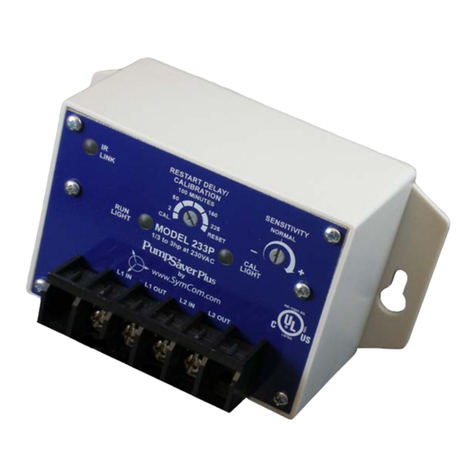
SymCom
SymCom PumpSaver Plus 111P installation instructions
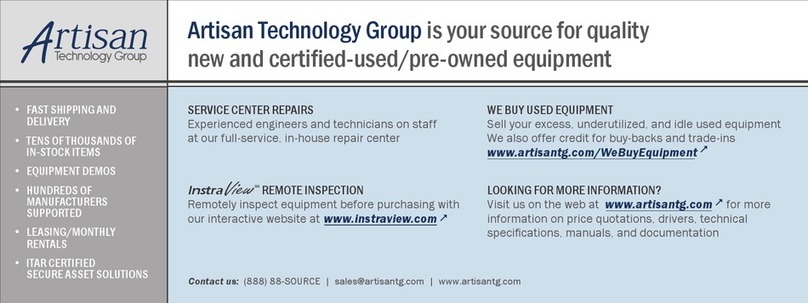
Measurement Computing
Measurement Computing CIO-DDA06/16 user guide
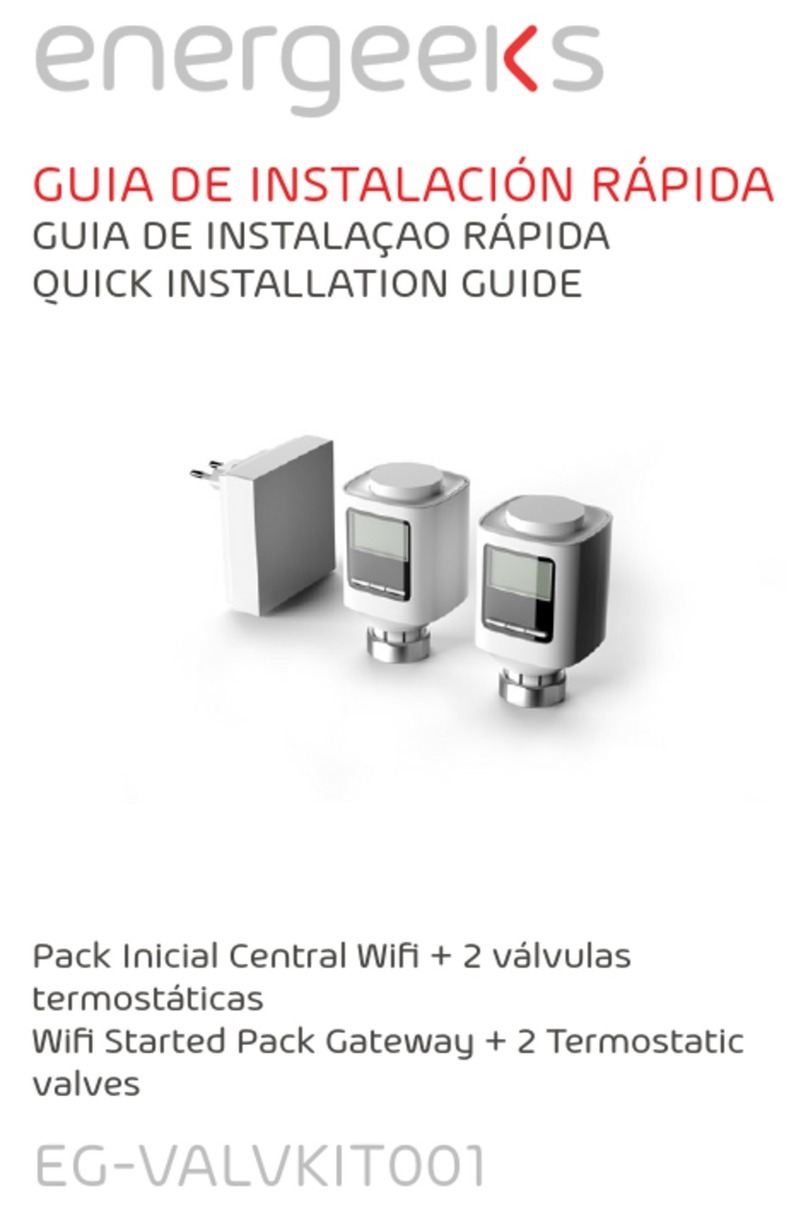
Energeeks
Energeeks EG-VALVKIT001 Quick installation guide

getAir
getAir SmartFan TOUCH Installation and operating instructions
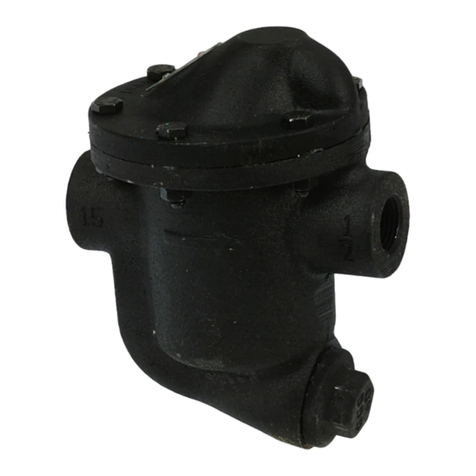
Spirax Sarco
Spirax Sarco HM Series Installation and maintenance instructions

Heicko
Heicko HD15BT user manual
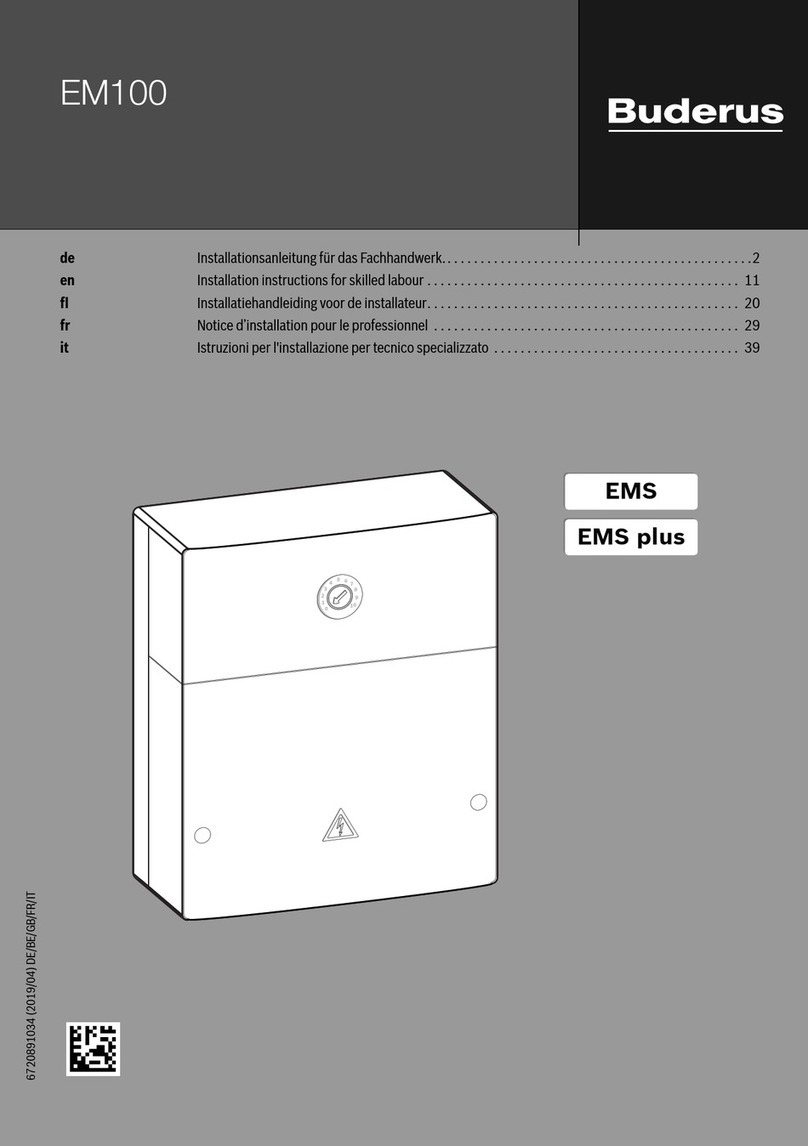
Buderus
Buderus EM100 Installation instructions for skilled labour
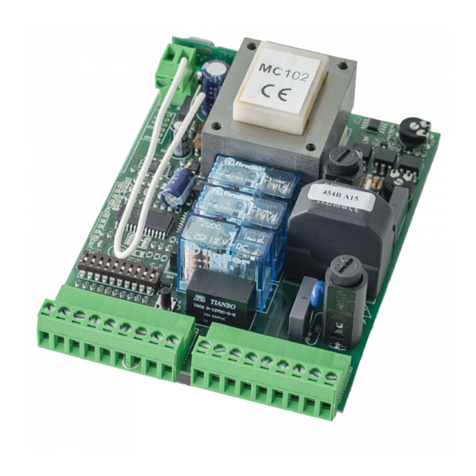
Motorline professional
Motorline professional MC102 User& installer's manual
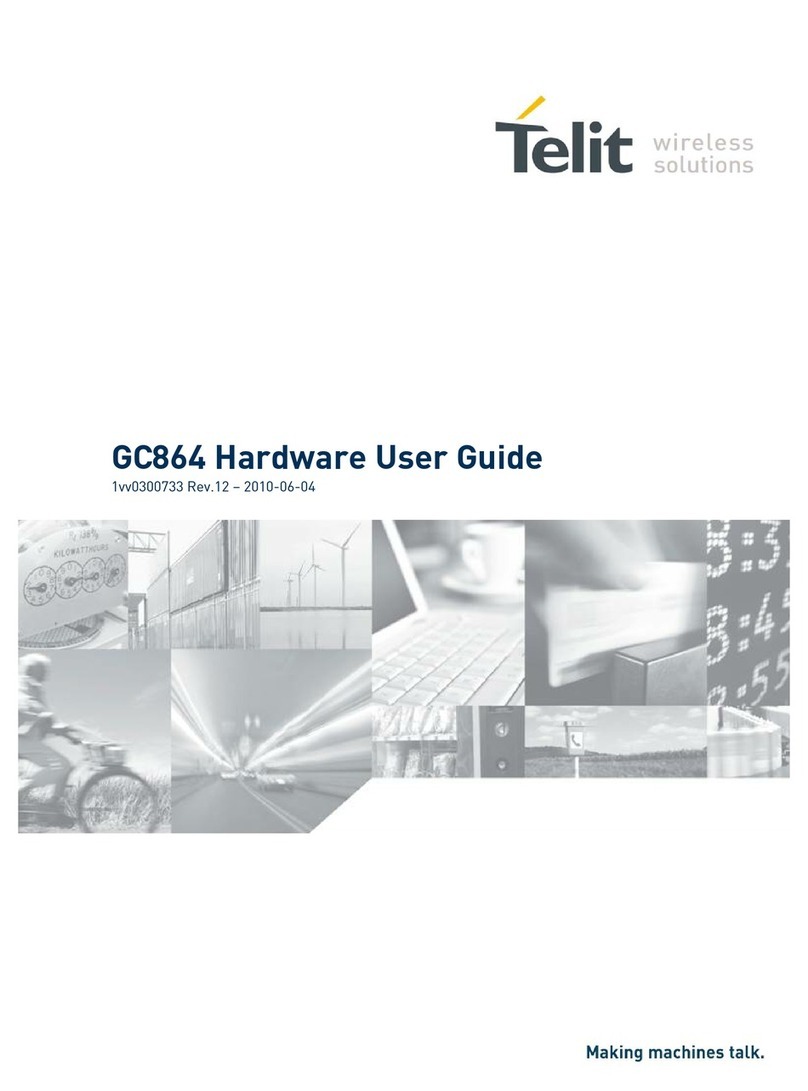
Telit Wireless Solutions
Telit Wireless Solutions GC864 Series Hardware user's guide
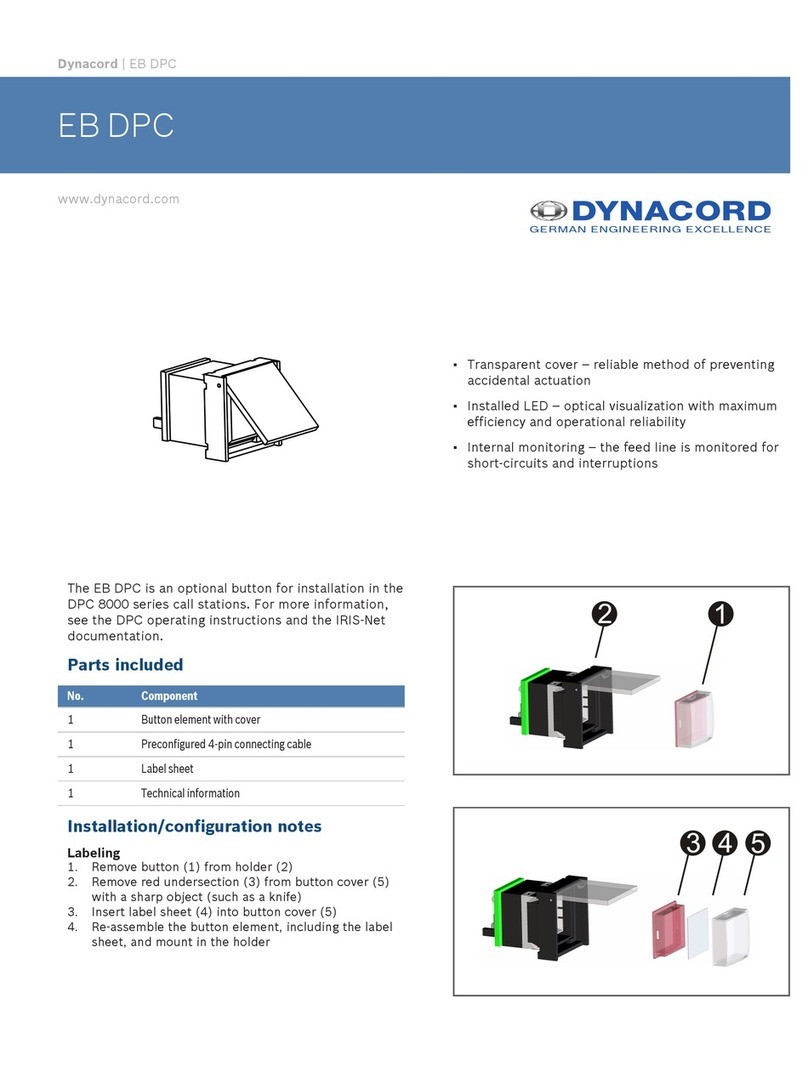
Dynacord
Dynacord EB DPC manual
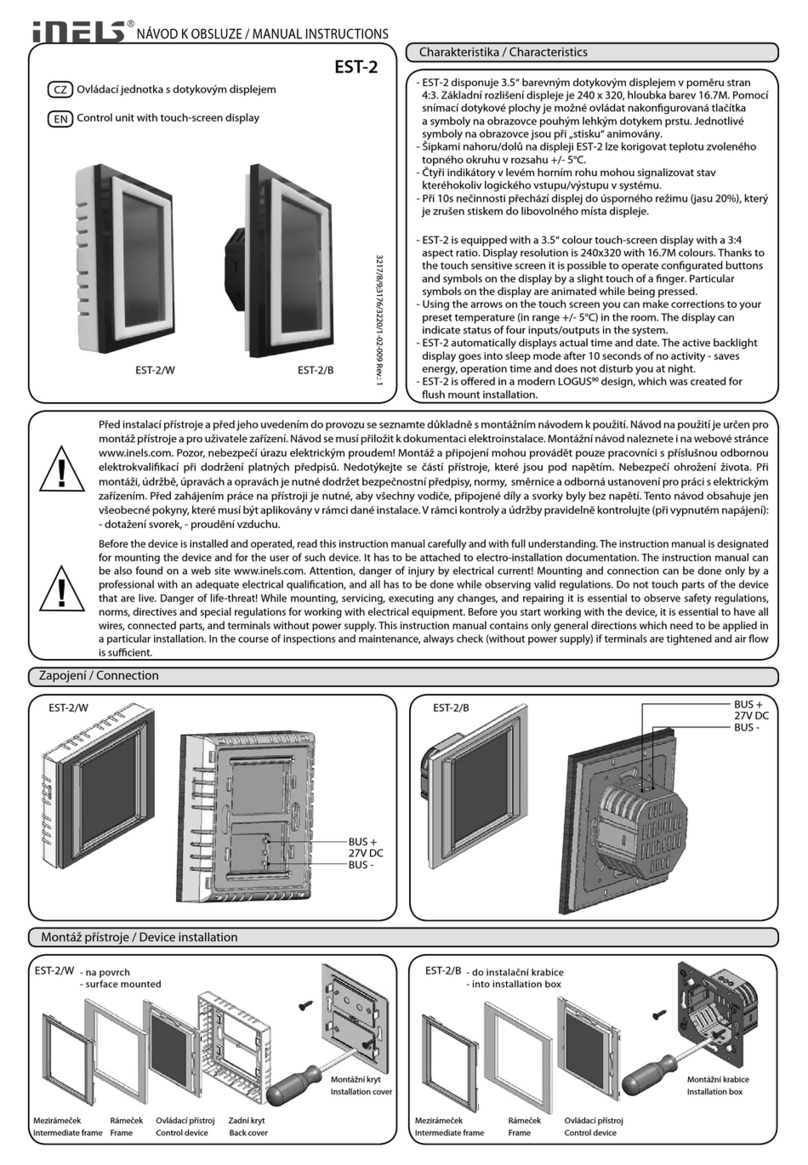
iNels
iNels EST-2 Series Manual instructions
